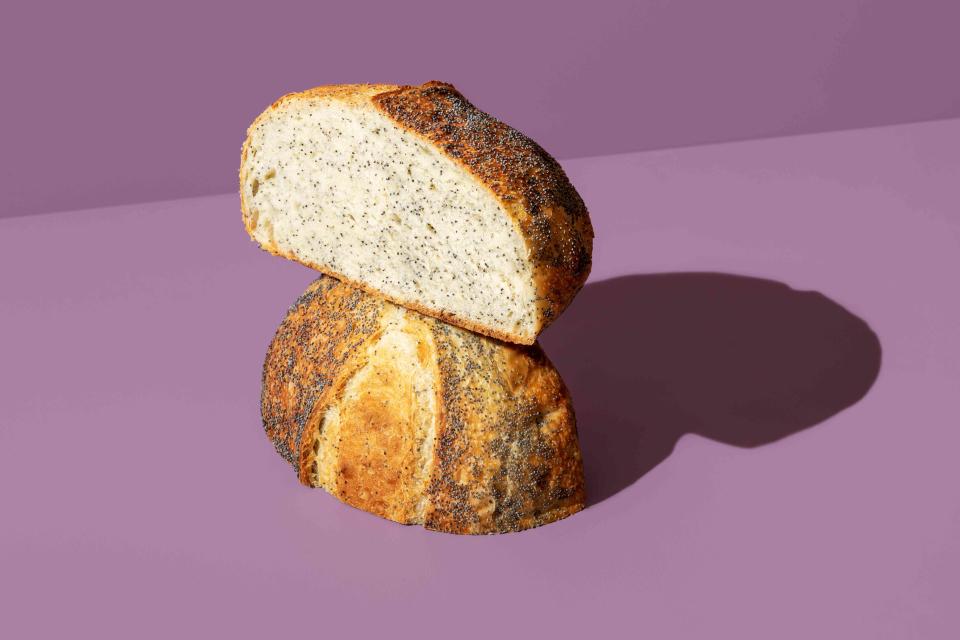How to Store Bread So It Doesn't Get Stale
Once you learn these bread hacks, you’ll never forget ‘em.

Say Cheese/Getty Images
There’s no argument that aside from eggs and milk, bread is one of the most essential items to have on hand each week. Whether you’re packing sandwiches for your kids, starting your day with a slice of avocado toast, or making something special like homemade croutons, bread might be the most versatile ingredient you can get your hands on. But oftentimes, the fresher the bread is, the quicker it will get stale or grow mold. That is, unless you know how to store bread the right way.
The type of bread will determine the best storage method. For example: If you’ve baked a fresh sourdough and would like it to last as long as possible, you might want to consider only slicing what you need, and then storing the remainder of the loaf in a brown paper bag. When it comes to getting the most out of your bread, here’s what you should keep in mind.
Related: How to Store Raspberries So They Don’t Grow Mold
How to Store Homemade Bread
There’s so much to love about fresh, homemade bread but if it’s not stored properly, you could be in for an unpleasant surprise: stale, inedible bread. Whether you bake fresh bread often, or buy it from a local bakery, it’s a good idea to invest in a bread box. Not only will a bread box help reduce oxidation and help you get the most out of your bread, but there are so many cute options out there that will look adorable on your kitchen counter.
However, if you don’t want to go the bread box route, you can also use wax paper or a dish cloth as a protective wrap. A good rule of thumb is to always avoid storing fresh bread in plastic because it can promote mold growth and cause your bread to spoil quickly.
How to Store Sourdough Bread
Sourdough bread isn’t just delicious, it’s also one of the few breads that doesn’t contain any preservatives and won’t grow mold quickly due to the lactic acid bacteria in it. But, since sourdough bread doesn’t have any preservatives, it won’t stay fresh for more than a day or two if it’s not stored properly. The trick to getting the most out of your sourdough is to store it unsliced in a brown paper bag. When stored this way, it will last for up to a week.
Related: How to Make Sourdough Starter From Scratch
How to Store Packaged Bread
Most store-bought bread contains preservatives, which helps to extend its shelf life. The plastic bag that packaged bread comes in is usually enough to keep it fresh for about a week, or longer. Depending on the type of bread, you might want to keep it in the refrigerator; otherwise, it's best to store packaged bread in a dark, dry area, like in a pantry or drawer.
If you buy your bread from Trader Joe’s, a brand that doesn’t use preservatives in its products, or the bread you purchase is otherwise preservative-free, you can set aside about a week’s worth of bread that you intend to eat, and store the rest in the freezer. More on that below.
Can You Freeze Bread?
Freezing bread is one of the best tricks because it can extend the shelf life of your loaf for up to three months, and will ensure you always have bread on hand. To freeze bread, all you have to do is wrap the bread in plastic wrap and then place it in a freezer-friendly plastic storage bag.
If you’re storing an unsliced loaf, you’ll have to allow it to thaw on your counter for a few hours before digging in. For an even better defrosted loaf, you can take the extra step of reheating it in an oven preheated to 350 degrees. Your loaf is ready to be enjoyed when it is warmed through.
Related: Want to Buy a Healthier Loaf? Avoid Breads With These 7 Nutrition Red Flags
If you’re thawing sliced bread, it should only take about an hour or two on the counter to soften. To revive a previously frozen slice of bread, place it in the toaster for about a minute once it has come to room temperature.
For more Real Simple news, make sure to sign up for our newsletter!
Read the original article on Real Simple.


